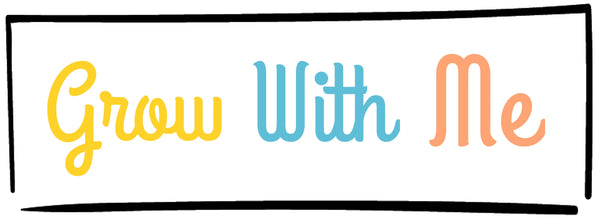
Choosing Newborn Developmental Toys
Share
When you're looking at toys for a brand new baby, simpler is almost always better. The best choices are things that gently engage their brand-new senses of sight, sound, and touch. We're talking about items with high-contrast patterns that catch their still-developing eyesight, or soft rattles that introduce them to the magic of cause and effect. These aren't just for keeping them occupied; they're the very first tools for learning.
Why Play Is Your Newborn’s First Job
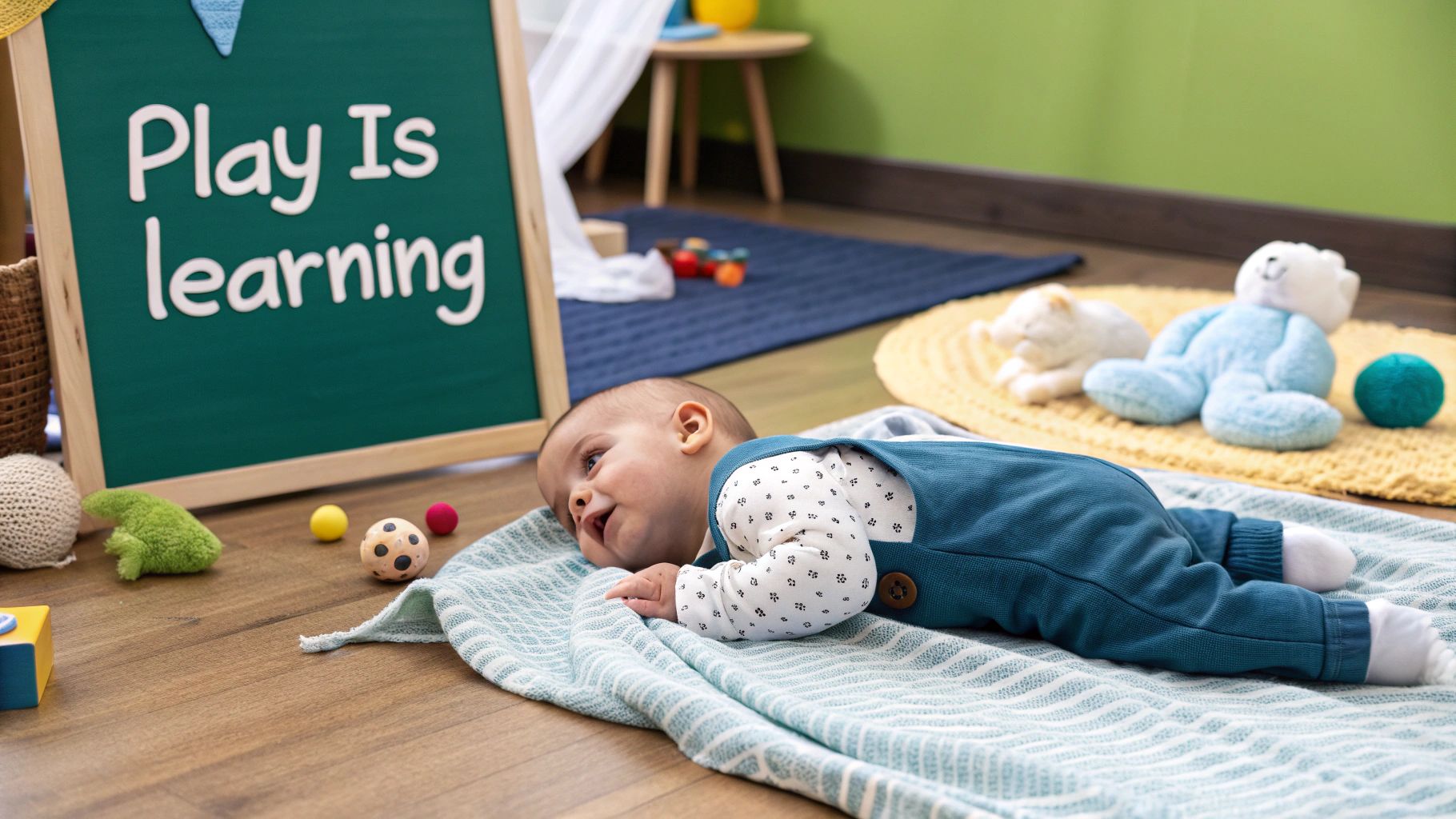
It’s tempting to see a newborn's life as a simple cycle of eating, sleeping, and nappy changes. But in those quiet moments when they're awake and alert, they're actually doing their most important job: playing. For a baby, play isn't just a bit of fun—it's how they figure out the world and their place in it.
Every little interaction, from your gentle touch to the feel of a simple toy, is busy building vital connections in their brain. The right newborn developmental toys are designed to spark this growth, meeting your baby exactly where they are in their journey.
The Building Blocks of Brain Development
Picture your baby's brain as a new city being built from the ground up. Simple, purposeful toys act like the foundational materials, helping to construct the roads and bridges that connect different areas like their sensory, motor, and cognitive skills.
Purposeful play, even for just a few minutes each day, lays the groundwork for all future learning, from grasping a crayon to solving a maths problem. It’s a simple investment with a lifelong return.
This whole process kicks off by stimulating their most basic senses:
- Sight: Your baby's vision is still fuzzy, so high-contrast images and bold, simple patterns are perfect for helping them focus and strengthening their eye muscles.
- Sound: A gentle rattle or a toy that makes a soft crinkle sound teaches them to track sounds and introduces the idea that their actions can make something happen.
- Touch: Giving them different textures to feel, from silky fabrics to smooth wooden rings, provides a wealth of new sensory information.
Choosing the right toys can feel like just another thing on a never-ending list, but it really doesn't need to be overwhelming. If you're getting ready for your little one's arrival, our guide to first-time mum essentials can help make that to-do list a bit more manageable.
So, What Makes a Toy "Developmental," Anyway?
When you're looking for the best newborn developmental toys, what are you actually looking for? It's not about the flashing lights or all the bells and whistles. A truly developmental toy is one that meets your baby exactly where they are and gently nudges them towards the next little milestone.
Think of these toys as the first tools in your baby's learning toolkit. A builder doesn't use a sledgehammer for a finishing nail, and in the same way, each toy has a job to do, helping to build your baby’s brain and body. For a newborn, simple is almost always better.
It’s clear parents are catching on to the importance of early learning. The UK baby toys market was valued at an estimated $821.5 million USD in 2024, a figure that's set to grow as more people realise how vital these first few months are. You can read more about these market trends and projections if you're curious.
The Building Blocks of Baby's Growth
A great developmental toy will target at least one of the core areas of your baby’s growth. The aim is to provide just enough stimulation to help forge those crucial neural pathways, without overwhelming their brand-new senses.
These toys focus on three main areas:
- Sensory Skills: This is all about sight, sound, and touch. High-contrast cards give their fuzzy eyesight a gentle workout, while a soft rattle teaches them to turn their head towards a sound.
- Gross Motor Skills: These are the big movements – think arms, legs, and their little core muscles. An activity mat or play gym encourages them to kick and reach, which is the foundation for strengthening their neck and eventually rolling over.
- Fine Motor Skills: This is the very beginning of hand-eye coordination. Soft, grabbable toys that they can bring towards their face help them start to understand how their hands work.
A developmental toy doesn't do the work for the baby; it invites the baby to do the work. It’s all about sparking curiosity and encouraging them to explore, turning simple actions into powerful learning moments.
At the end of the day, the best toy is one that’s perfectly matched to what your baby can do right now. A simple black-and-white card might seem boring to us, but for a one-month-old, it’s a fascinating world of shapes and lines, providing just the right challenge to help their brain grow.
Matching Toys to Your Baby’s First Milestones
A newborn’s world seems to expand overnight, with new skills popping up almost daily. The best newborn developmental toys aren’t necessarily the flashiest, but the ones that meet your baby right where they are. They should offer just the right kind of stimulation for what they can do now, while gently nudging them towards their next big achievement.
Think of it like this: you wouldn't hand a complex puzzle to a one-month-old any more than you'd give a toddler a steak knife. By lining up their toys with their developmental timeline, you create play that actually means something. It builds their confidence and skills, one tiny step at a time, ensuring they feel engaged and successful, never overwhelmed.
From Blurry Vision to Purposeful Kicks
In those first few weeks, your baby is just figuring out how to focus their eyes. Then, they start tracking sounds. Before you know it, those little legs are kicking with real purpose. Each of these stages is a golden opportunity for development, and the right kind of play can make all the difference.
This timeline shows just how simple toy choices can align perfectly with your baby’s first three months of incredible growth.
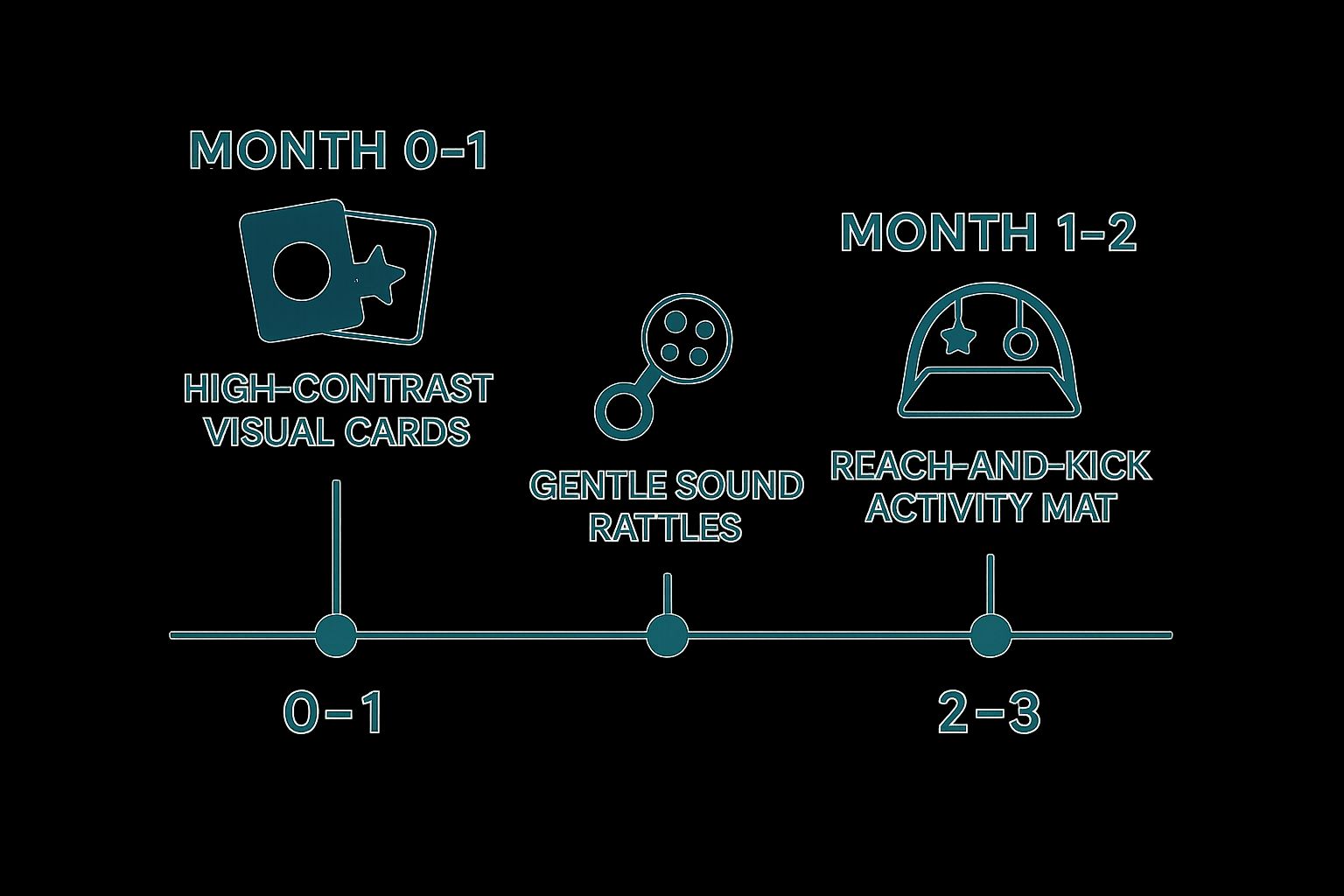
As you can see, there’s a clear journey here. It starts with simple, passive sensory experiences like looking at high-contrast cards and moves towards more active play, like kicking and batting at an activity mat.
Let’s break down what’s really going on at each stage.
Newborn Toy Guide by Developmental Stage
This little guide is a quick-reference for matching the right toys to your baby's age and the specific skills they're working on in those whirlwind first three months.
| Age Range (Months) | Key Developmental Focus | Recommended Toy Types |
|---|---|---|
| 0–1 Month | Developing vision, strengthening eye muscles, learning to focus | High-contrast cards (black & white), soft fabric books |
| 1–2 Months | Auditory tracking, turning head towards sounds, cause & effect | Soft rattles, wrist shakers, gentle musical toys |
| 2–3 Months | Reaching, batting, kicking, building gross motor skills | Play gyms, activity mats with dangling toys, tummy time mirrors |
Remember, this is just a guide! Every baby develops at their own pace, but this gives you a great starting point for encouraging their next big step.
What's Happening Month by Month
-
0-1 Month: A Focus on Vision
At this stage, your baby’s sight is still quite blurry. High-contrast cards with bold, simple black-and-white patterns are fantastic because they provide the strong visual input needed to strengthen their eye muscles and improve focus. It's their very first lesson in concentrating on an object. -
1-2 Months: Encouraging Auditory Tracking
As their hearing sharpens, toys with gentle sounds introduce an early, wonderful lesson in cause and effect. A soft rattle or a shaker worn on their wrist encourages them to turn their head towards the noise, a foundational skill for coordination down the line.
The goal isn't just to entertain, but to connect. When your baby realises their movement makes a sound, they're building the first neural pathways for understanding their impact on the world.
-
2-3 Months: Inspiring Reaching and Kicking
With more strength in their arms and legs, play gyms and activity mats become the perfect playground. The dangling toys invite them to reach, bat, and kick. This isn't just random movement; it’s hard work that builds crucial gross motor skills and strengthens their core, neck, and leg muscles.
By matching toys to these key phases, you’re creating a brilliant environment for them to grow and learn. If you're looking for more simple but powerful ways to interact, have a look at these developmental activities for infants that pair perfectly with playtime.
What to Look for in a Great Newborn Toy
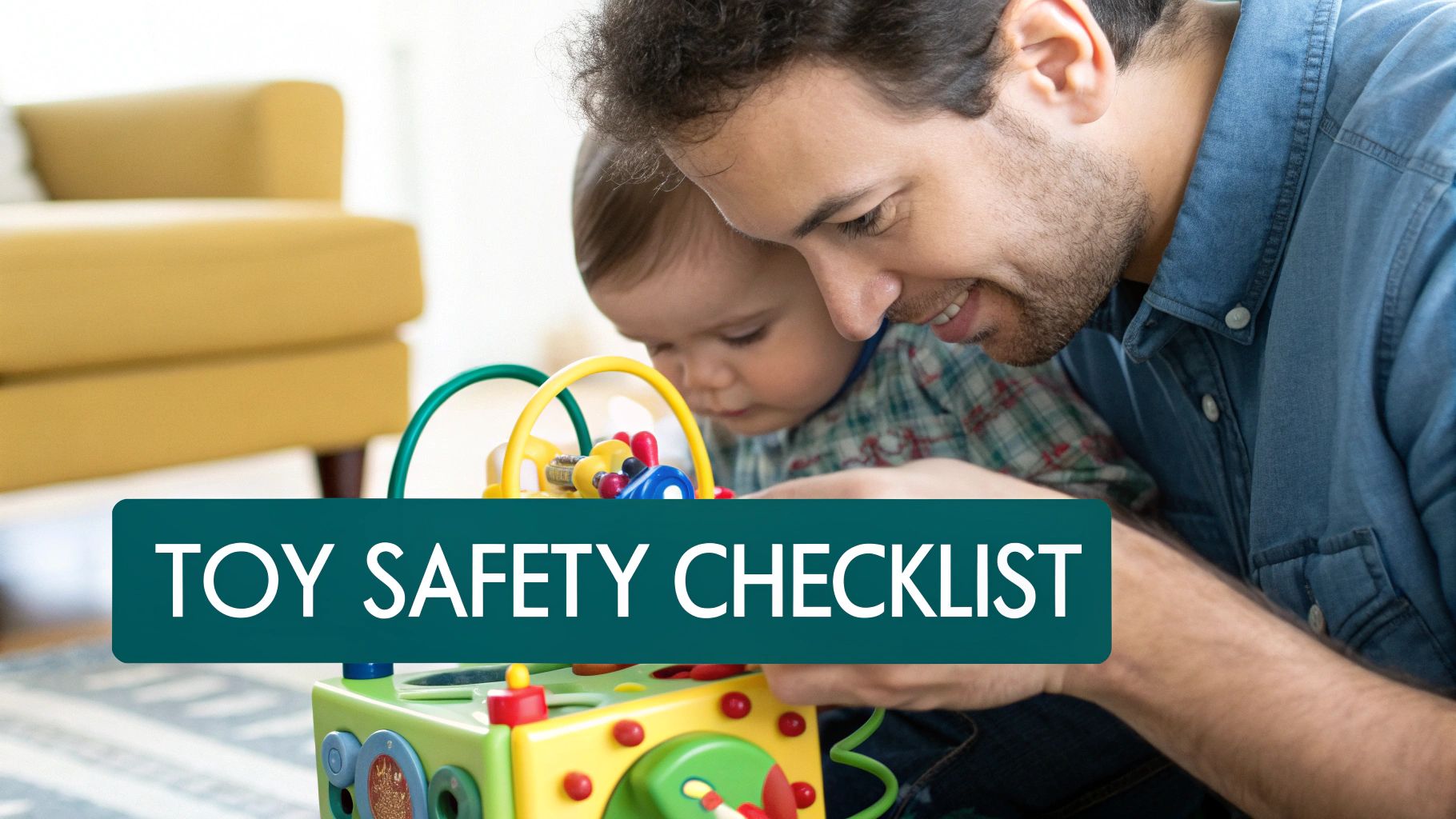
When you're faced with a wall of brightly coloured boxes, how do you pick out the genuinely great newborn developmental toys? It’s about more than just matching the age on the packaging. The best toys have a few things in common that make them safe, captivating, and actually helpful for your baby's development.
Think of it as a simple checklist for spotting a real winner.
First up, and most importantly, is safety. A toy's number one job is to be completely safe for your little one to gum, grab, and explore. This means well-made items with no tiny parts that could become a choking hazard.
Always check for non-toxic, baby-safe materials. Look for things like BPA-free plastics, food-grade silicone, or natural, untreated wood. In the UK, the CE or UKCA mark is your best friend—it’s the official sign that a toy has passed strict safety checks.
More Than Just a Pretty Toy
Once safety is sorted, a great toy needs to grab your baby's attention and fire up their senses. Remember, a newborn's eyesight is still a bit blurry, which is why they’re fascinated by high-contrast patterns. Bold black and white designs are a huge hit in the early days.
As they get a bit older, different textures become a playground for their tiny hands. Think soft, crinkly fabrics, smooth wooden surfaces, and squishy silicone. Gentle sounds, like a soft rattle, are also brilliant for teaching them to follow sounds and figure out cause and effect.
The best newborn developmental toys are often the simplest ones. They don’t need flashing lights or batteries—they just need to spark a little curiosity and be safe enough for endless exploration.
Finally, think about how long the toy will last. The best buys are often the most versatile. A simple set of wooden rings, for example, is perfect for a newborn to grasp. A few months later, it becomes a brilliant teether. And down the line, it’s a stacking toy. Choosing something that can grow with your baby means you’re getting real value, not just a three-month wonder.
Top Categories of Newborn Developmental Toys
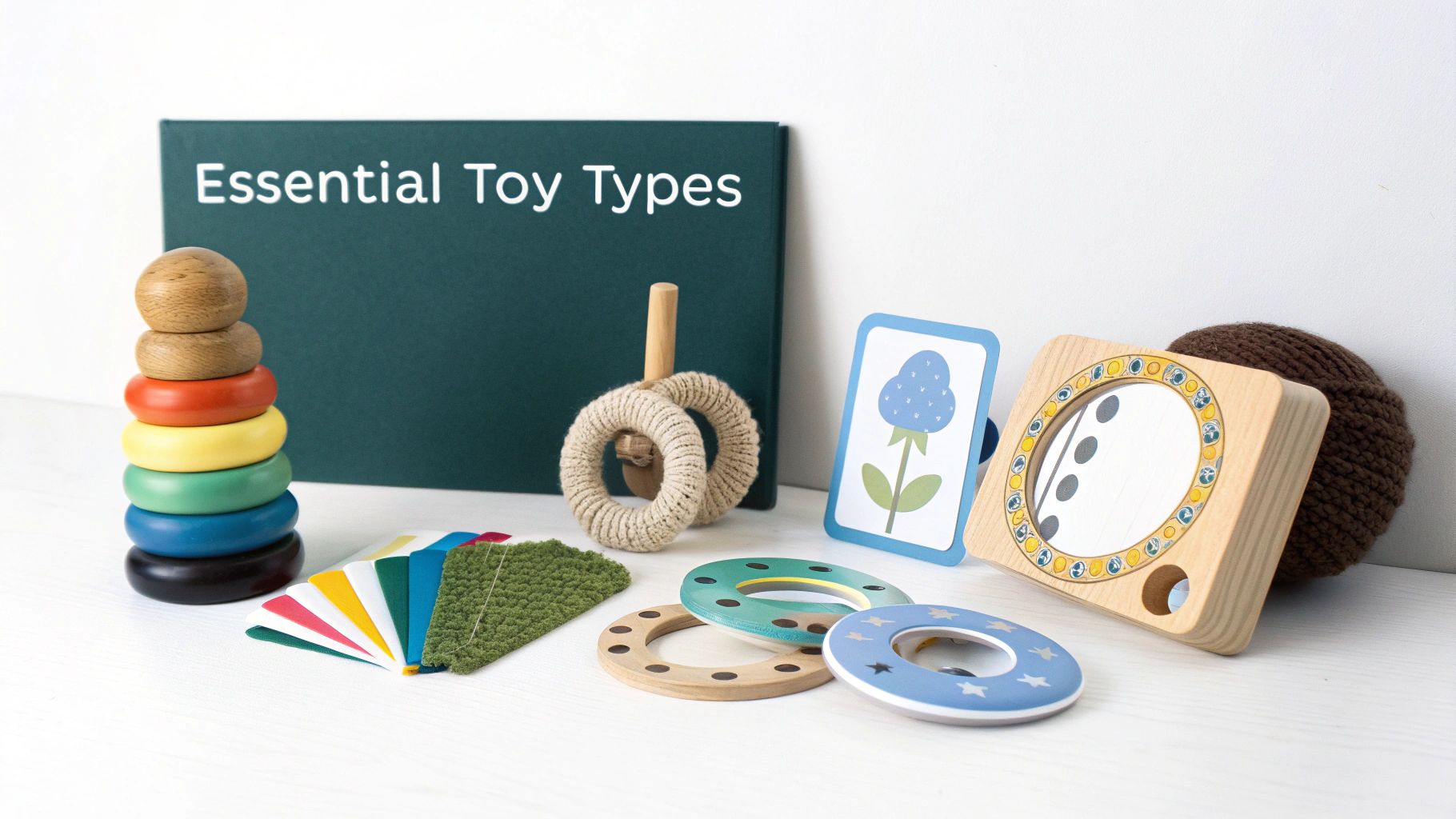
Walking into a toy shop for your newborn can feel overwhelming. With so many options, where do you even start? The trick is to simplify, focusing on a few key categories that genuinely support your baby's development in these crucial early months. It's about building a small, purposeful collection that packs a real punch.
This shift towards meaningful play isn't just a hunch. The UK toy market hit an estimated $13,948.24 million USD in 2024, and the infant/preschool sector is a huge part of that growth, driven by parents looking for toys that do more than just entertain.
High-Contrast Books and Cards
For the first few weeks, your baby’s world is a beautiful blur. Their vision is still developing, and they can’t see the full spectrum of colour just yet. That’s why bold, simple patterns in black and white are so completely captivating for them.
- What they do: These simple images help to strengthen their eye muscles, improve focus, and gradually lengthen their attention span.
- How to use them: During a quiet, alert moment, just hold a card about 20-30 centimetres from your baby's face and watch them lock on.
Soft Rattles and Wrist Shakers
Gentle sounds are your newborn's first lesson in cause and effect. When they flail their little arm and hear a soft jingle, a lightbulb goes off—they’re making a direct connection between their own action and the reaction it causes. These are also brilliant for auditory tracking, encouraging them to turn their head towards a sound.
Play Gyms and Activity Mats
Once your baby is happily spending more time on their back (and during those all-important tummy time sessions), a play gym becomes their very first personal fitness centre. Those dangling toys encourage reaching, kicking, and batting, which are the building blocks for gross motor skills. It all helps build strength in their neck, core, and limbs, getting them ready for big milestones like rolling over.
The best newborn developmental toys are the ones that invite interaction. They don’t need flashing lights or batteries; they just need to spark curiosity and encourage your baby to explore what their own body can do.
Textured Sensory Toys
Touch is one of the main ways a newborn learns about the world around them. Introducing toys with a variety of textures—think crinkly fabrics, smooth wood, or bumpy silicone—gives them a rich sensory experience. As they grasp these different objects, they're also honing the fine motor skills they'll need for holding a spoon or a crayon down the line. We explore this more in our detailed guide on sensory toys for babies.
Baby-Safe Mirrors
You might be surprised by how much a simple, unbreakable mirror can do. While your baby won't realise they're looking at themselves at first, they'll be utterly fascinated by the "other baby" gazing back. This simple interaction is a wonderful way to kick-start social and emotional development from the very beginning.
Your Questions Answered: Newborn Toys
Stepping into the world of newborn toys can feel a bit overwhelming, and it's completely normal to have a few questions. Am I buying the right things? Do they have enough? Let's clear up some of the most common queries I hear from new parents.
How many toys does a newborn actually need?
This is probably the biggest question on every parent's mind. It's so easy to get caught up in the excitement, but honestly, less is more. For a tiny baby, a small, thoughtfully chosen collection of 3-5 high-quality toys is perfect. Any more than that, and you risk overstimulating them. The goal is to let them really get to know each item, whether it's a simple high-contrast card or a soft-sounding rattle.
Keep it simple. A handful of well-made, versatile toys will spark more curiosity and learning than a mountain of gadgets that only do one thing. Think quality over quantity every time.
When should I introduce toys?
You can start much earlier than you might think! In the first few weeks, you can place a high-contrast flashcard in your baby's line of sight during one of their brief, quiet awake periods. That's it. It’s a gentle, perfect start.
By the time they reach about two months old, they'll be ready for a little more, like batting at things on a play gym or exploring a textured ring during supervised tummy time. The key is to watch your baby's cues. A few focused minutes is far better than a long, overwhelming session.
Are second-hand toys safe?
Pre-loved toys are a brilliant, eco-friendly choice, but a quick safety check is essential. Before giving any used toy to your baby, give it a thorough once-over.
- Check for damage: Look for any chipped paint, splinters, or cracks.
- Test for loose parts: Gently pull on all the pieces to make sure nothing is about to fall off.
- Look for choking hazards: Ensure there are no small parts that could break free.
- Give it a good clean: Always wash pre-loved toys with a baby-safe soap or cleaning solution.
Do I need to buy expensive, high-tech toys?
The pressure to get the 'best' new gadget is real, and the market reflects that. Consumer spending on toys in the UK hit almost £12.5 billion in 2023, a massive leap from £6.7 billion back in 2005. You can read more about these UK toy industry spending trends on Statista.com.
But here’s the thing: meaningful development has nothing to do with price tags. Your face, your voice, and your touch are the most engaging 'toys' your baby will ever have. Simple, classic items often provide the richest play experiences.
